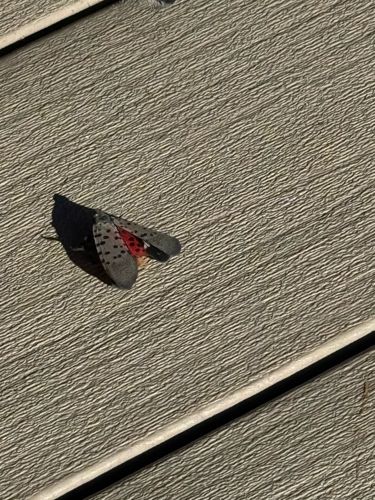Spotted Lanternfly
Scientific Name: Lycorma delicatula
Order & Family: Hemiptera, Fulgoridae
Size: Adults are approximately 1 inch (2.5 cm) long and 0.5 inch (1.2 cm) wide.

Natural Habitat
Originally from Asia, introduced to North America. Found on a wide range of host plants, including fruit trees, grapevines, hardwoods, and ornamental plants. Often found in agricultural areas, vineyards, orchards, and suburban environments.
Diet & Feeding
Feeds on the sap of over 70 different plant species using its piercing-sucking mouthparts. Preferred hosts include Tree of Heaven (Ailanthus altissima), grapevines, maple, walnut, and birch.
Behavior Patterns
Adults are active from summer to late fall. They lay egg masses covered with a mud-like substance on various surfaces (trees, rocks, outdoor furniture, vehicles). Nymphs and adults feed gregariously, excreting large amounts of sugary honeydew, which promotes the growth of sooty mold.
Risks & Benefits
Significant invasive pest, especially in agricultural industries like vineyards and orchards, causing sap loss, reduced plant vigor, and death. The honeydew attracts other insects and promotes sooty mold, which can cover plants and reduce photosynthesis. While there are no known direct benefits to ecosystems where it is invasive, it poses a severe threat to agriculture and natural resources.
Identified on: 9/20/2025